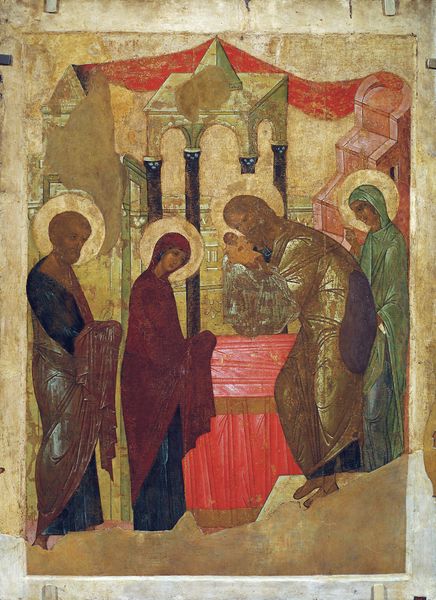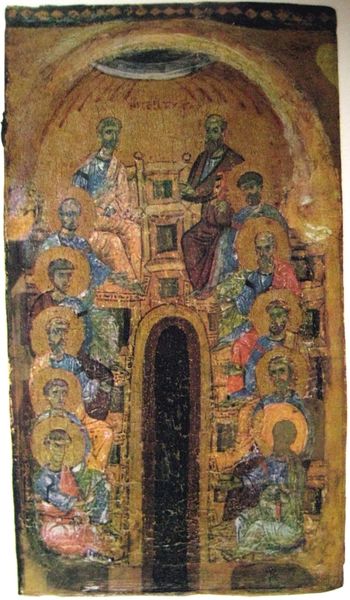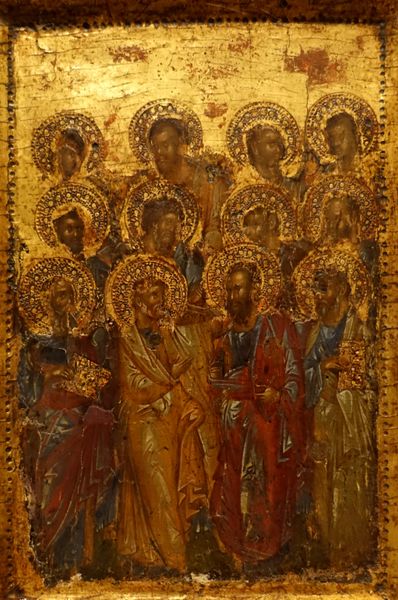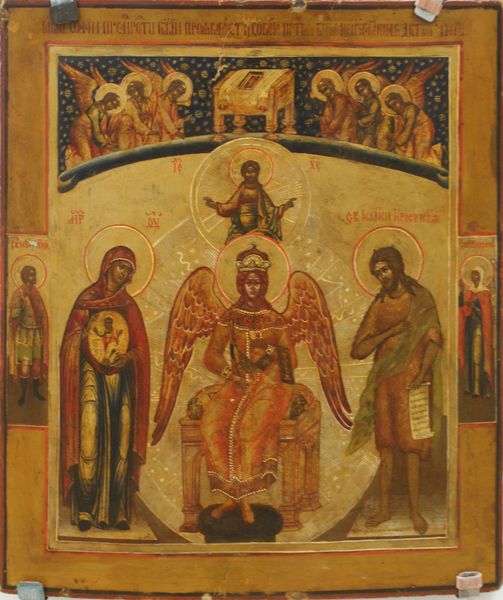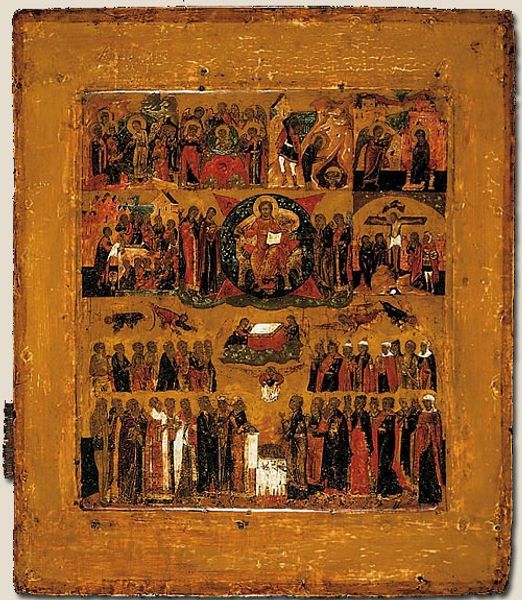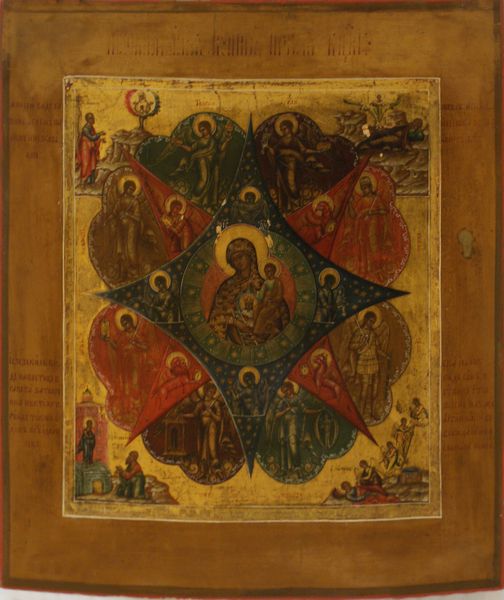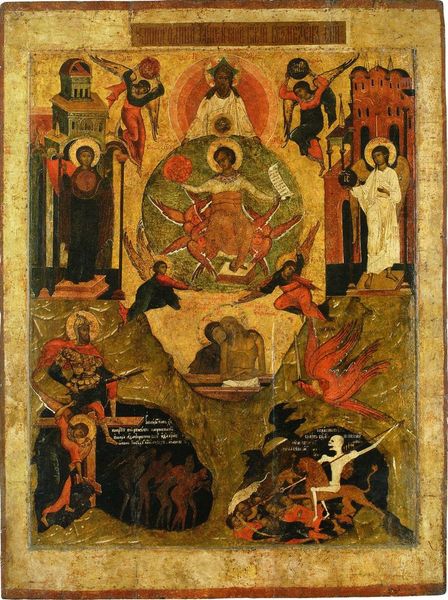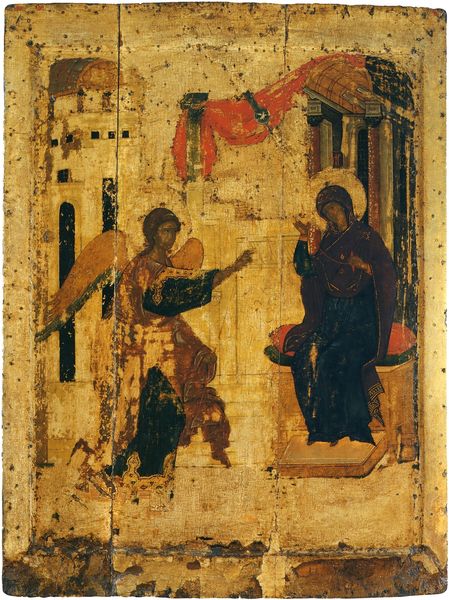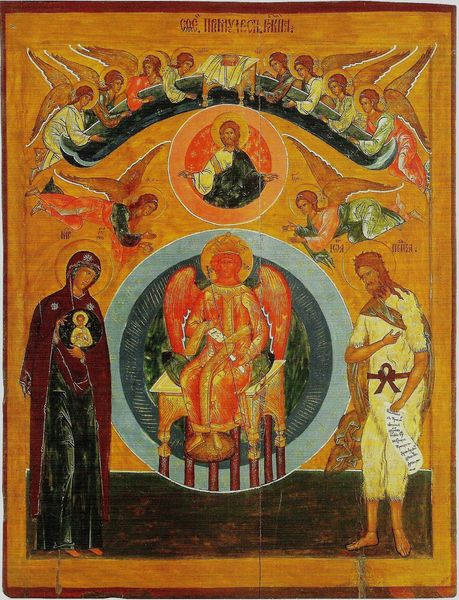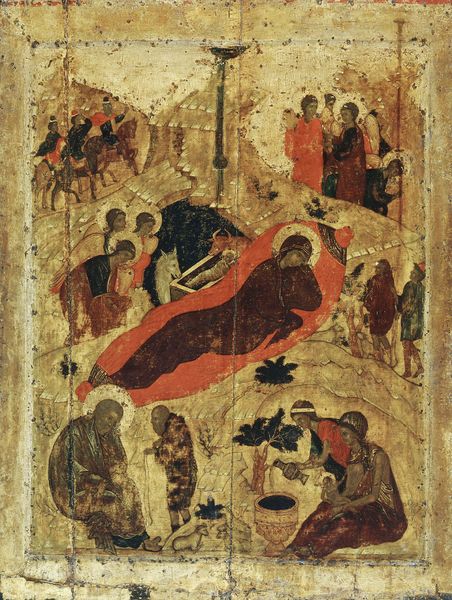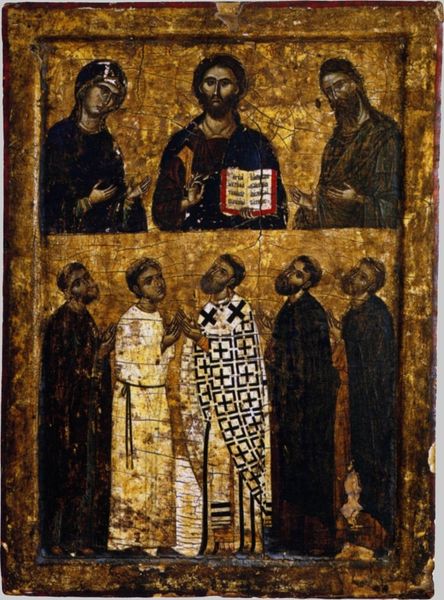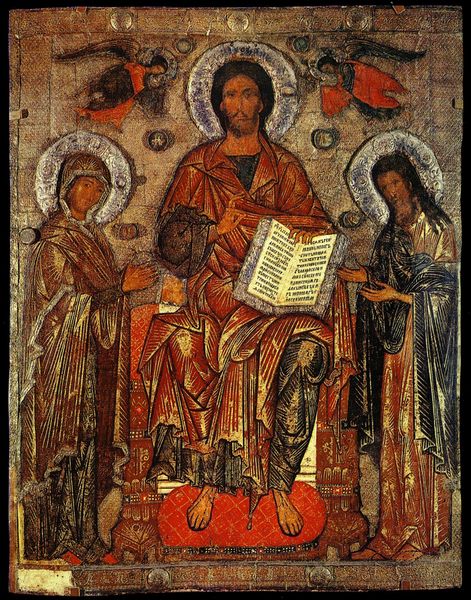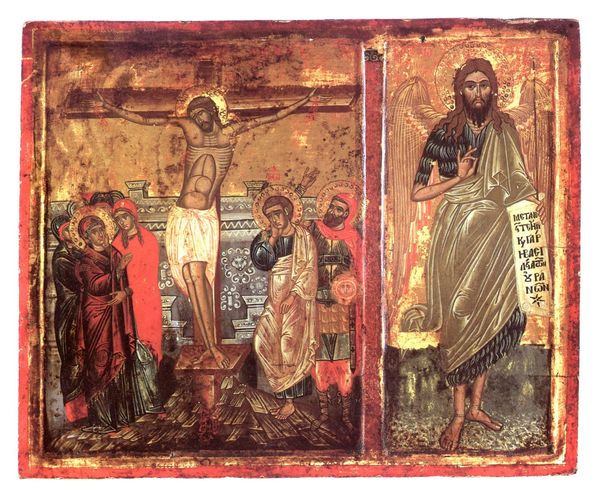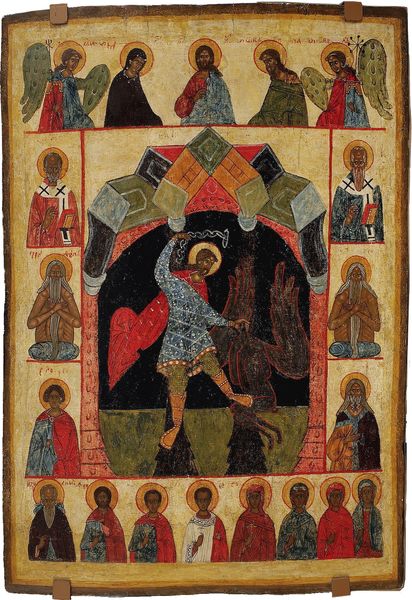
tempera, painting
#
byzantine-art
#
medieval
#
tempera
#
painting
#
figuration
#
handmade artwork painting
#
oil painting
#
painting painterly
#
painting art
#
history-painting
Copyright: Orthodox Icons,Fair Use
Curator: Immediately I'm struck by the quiet reverence despite the immense visual storytelling. The subdued palette lends an aged and timeless quality. Editor: We're looking at "The Deesis and the Twelve Great Feasts," a tempera painting dating back to around 1500. Curator: The hierarchical structure is really interesting; the central Deesis dominates the composition, acting almost like a keystone holding up the flanking narratives. Editor: Absolutely, and the iconographic program itself—Christ flanked by the Virgin Mary and John the Baptist—mediates between the divine and humanity. Notice, too, how the twelve scenes illustrating pivotal moments in the liturgical calendar are placed around it, effectively framing salvation history. Curator: The linear precision defining each figure feels deliberately archaic, in contrast to the narrative busyness happening in the border scenes. It’s like two different modes of seeing are clashing— or perhaps, working in productive tension. The folds and creases are beautifully accentuated, adding visual rhythm, especially in the drapery of Christ. Editor: There is a hypnotic pull toward those eyes, isn't there? Even across centuries and through the formal presentation of the Byzantine style, you still feel seen. I suspect the artist employed techniques and the colour composition in the artwork intentionally as a window for contemplating sacred mysteries. Curator: Precisely. The gold leaf, though distressed by time, signifies divine light, reflecting spiritual truth as much as it illuminates the figures. Its aged quality almost elevates the work further with each crack. Editor: It's almost as if time itself has become another layer of meaning. The icon feels like an artifact rescued from a profound, personal, and almost forgotten world of ritual and symbolism. And although partially dilapidated now, you almost wish that it were whispering forgotten religious lore into your ears! Curator: Indeed, and the strategic placement of the feasts reminds us that salvation is achieved through participation in sacred time, structured around Christ's life. Thank you, what a pleasure! Editor: The pleasure was mine. It makes you appreciate, perhaps even meditate, on just how far faith, spirituality, and devotion has evolved through all these years!
Comments
No comments
Be the first to comment and join the conversation on the ultimate creative platform.
